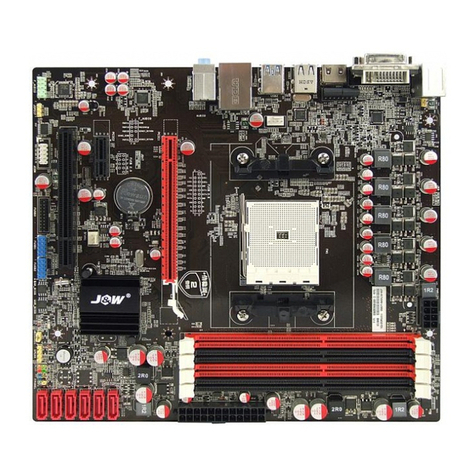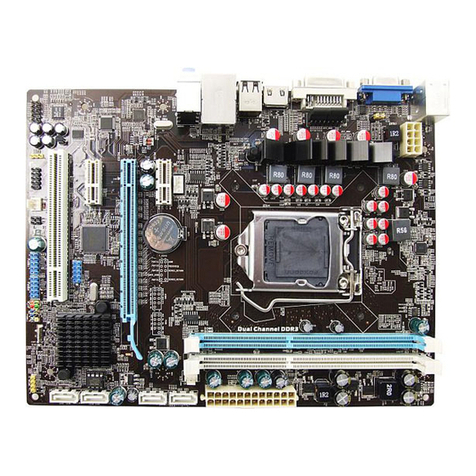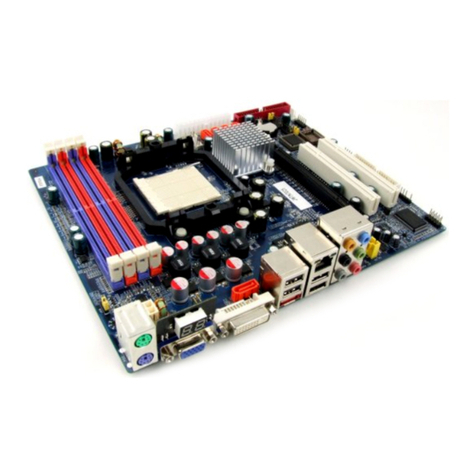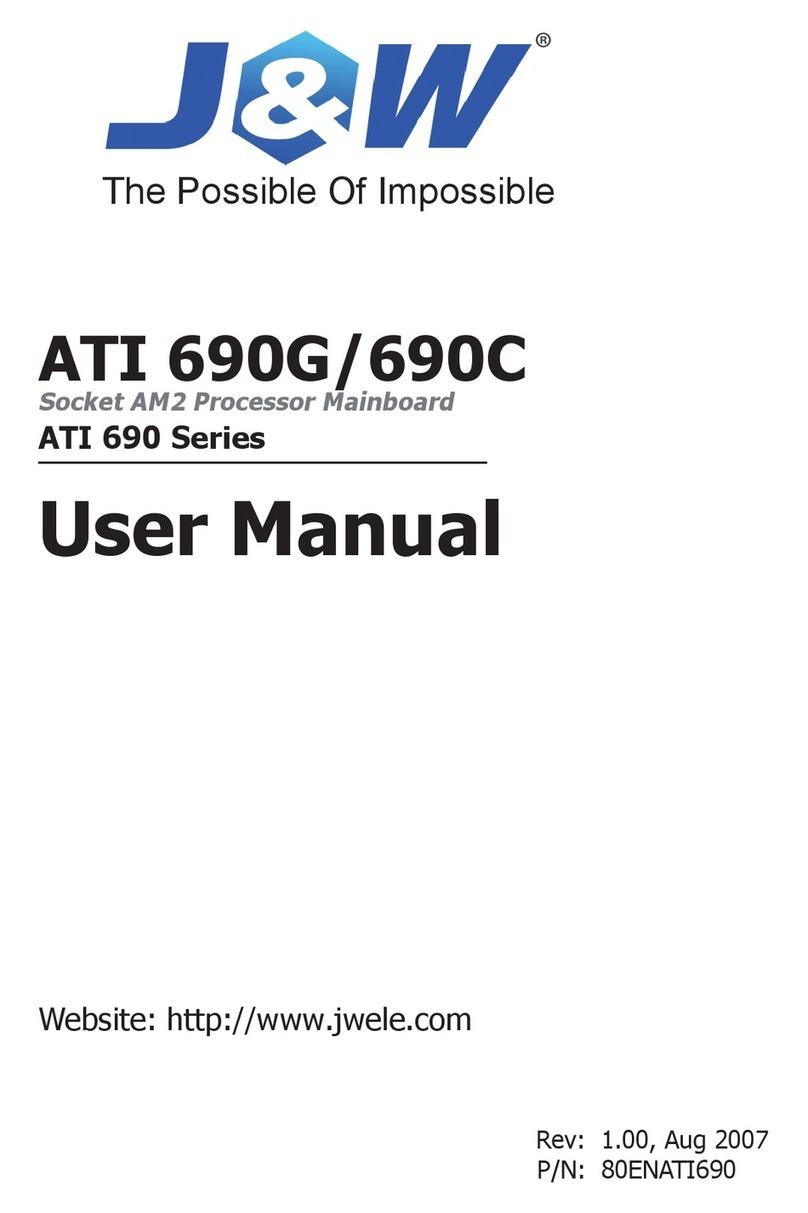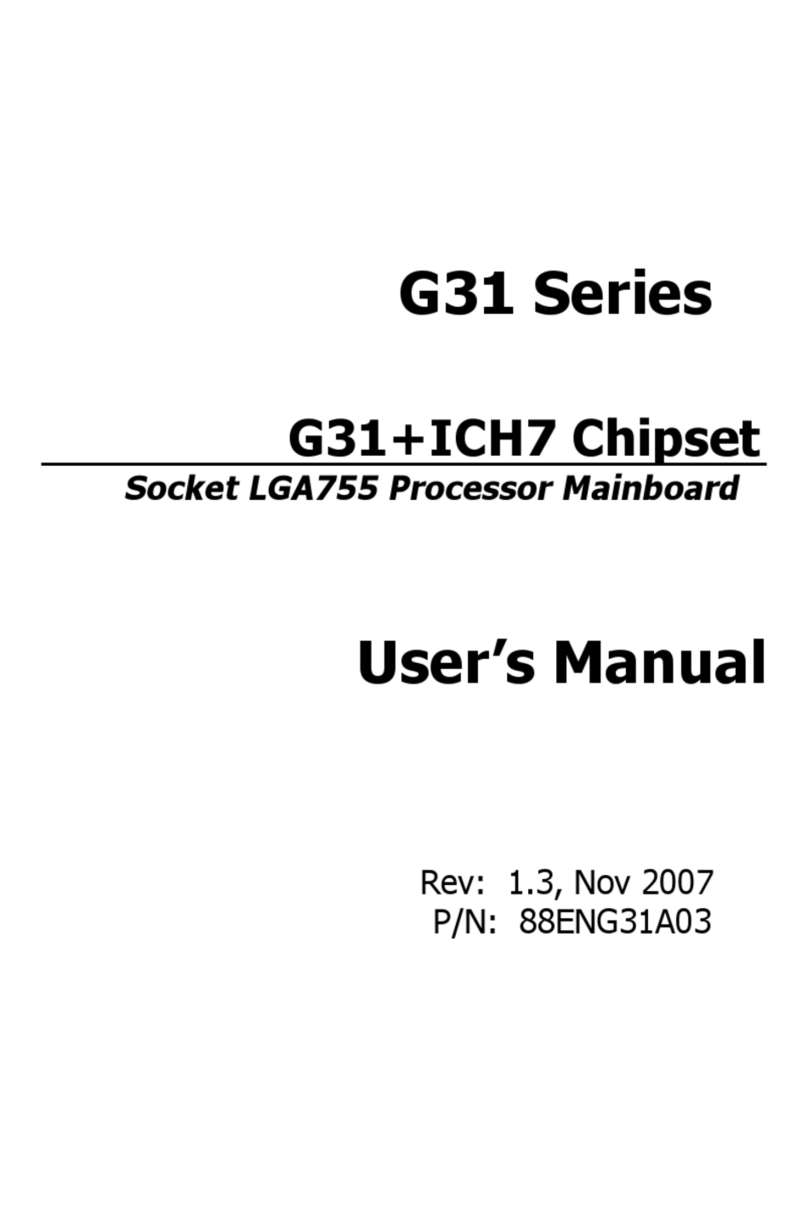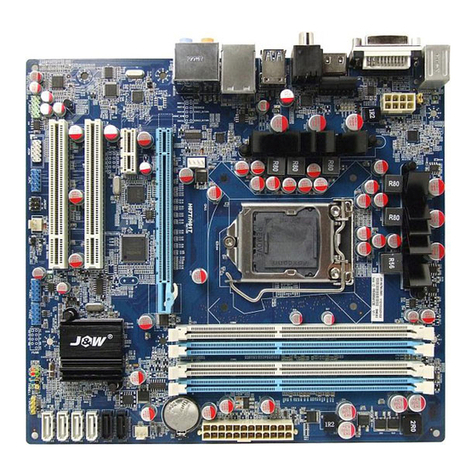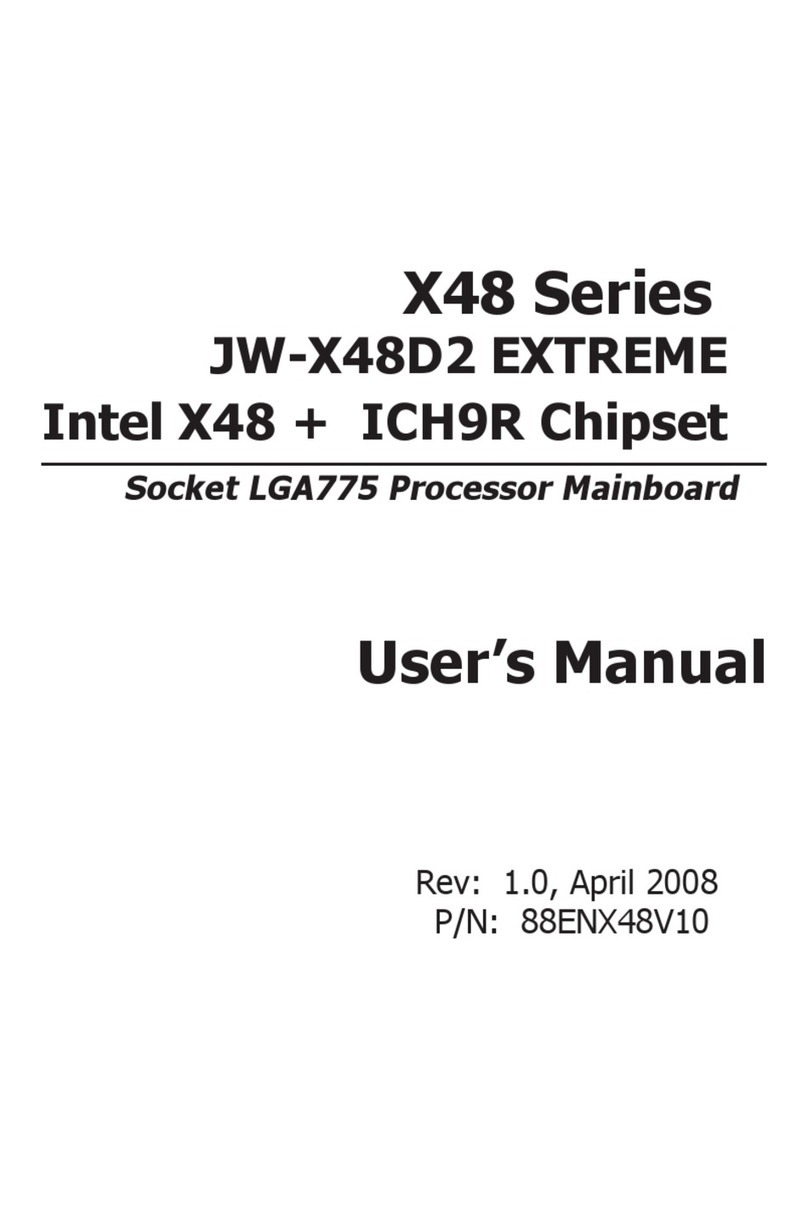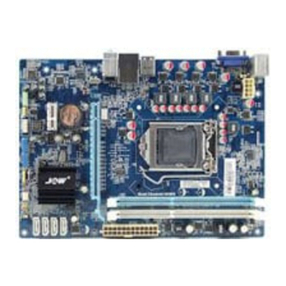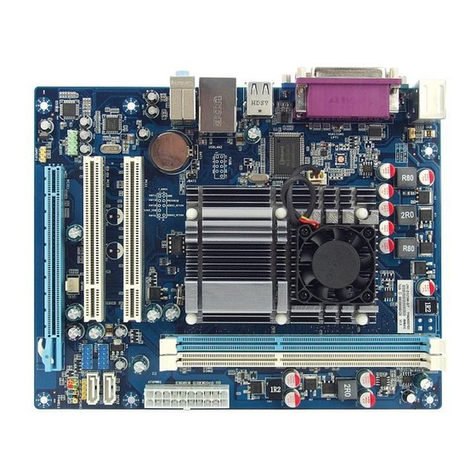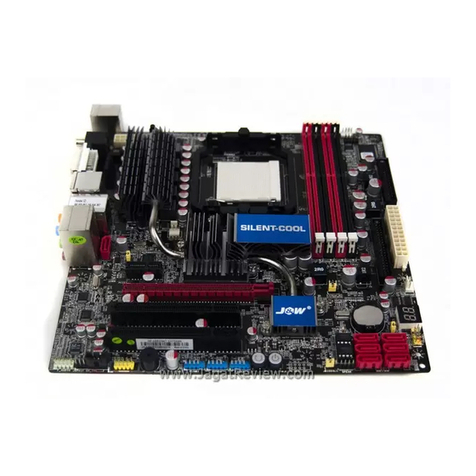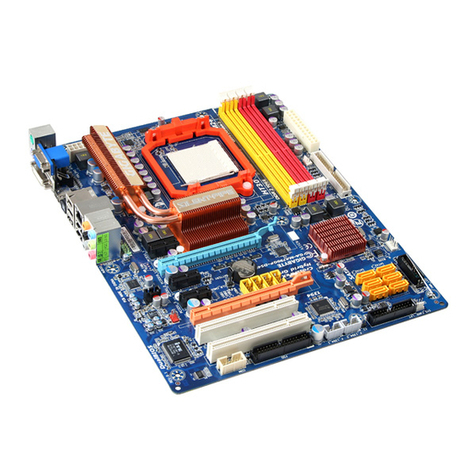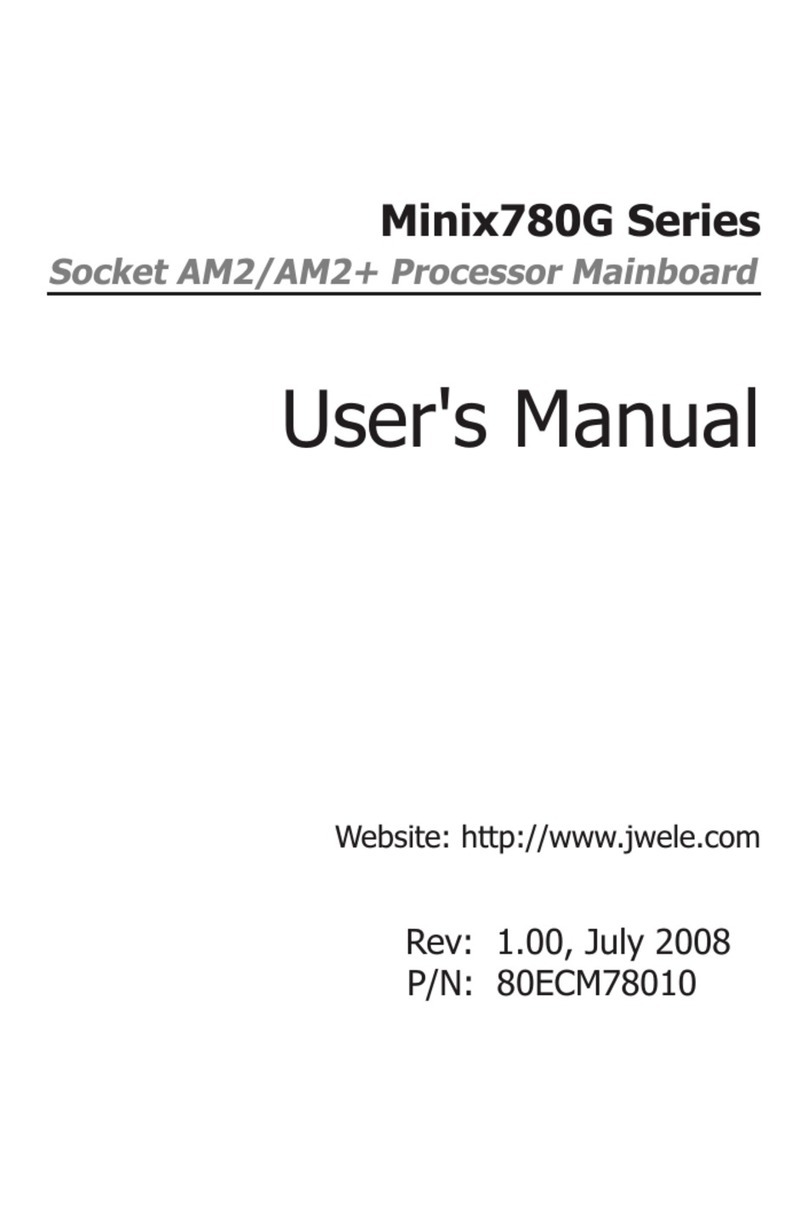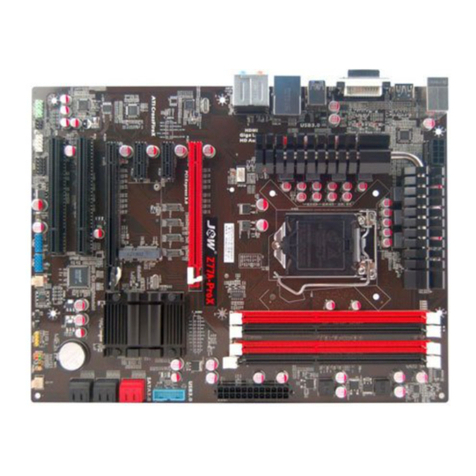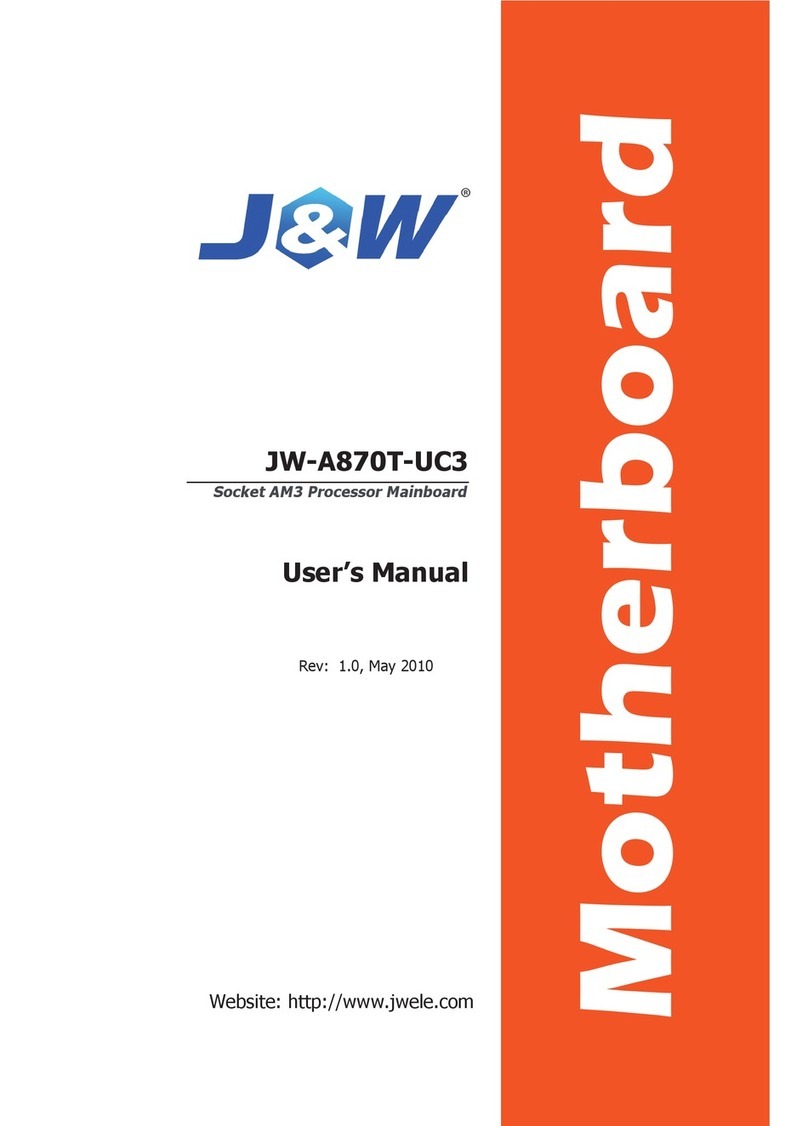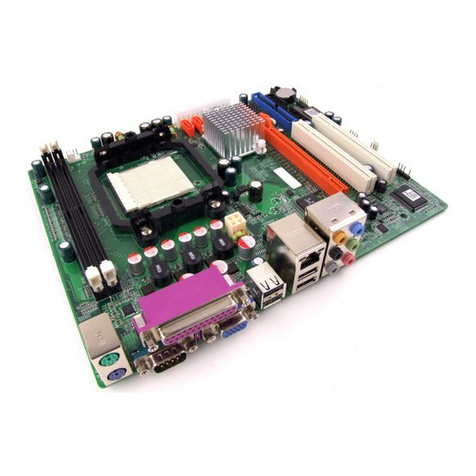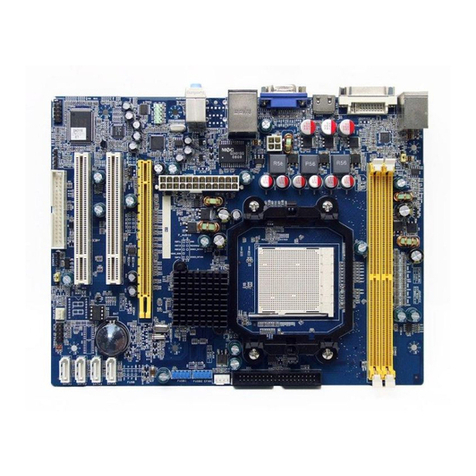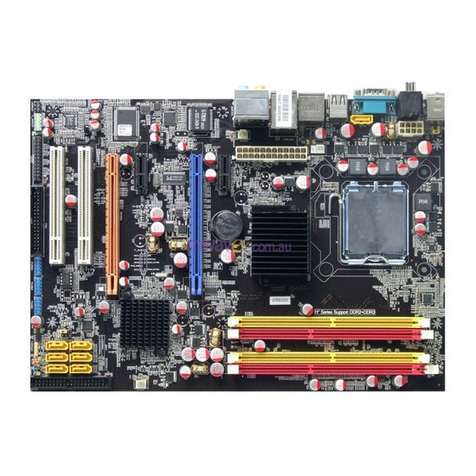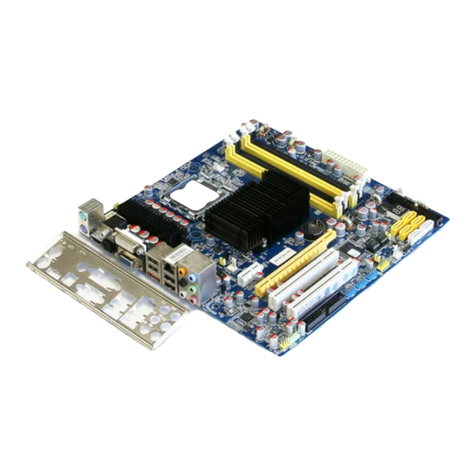
Table of Contents
Chapter1Introduction..............................................................................................................................................
3
1.1 Package Checklist ...............................................................................................................
3
1.2 Specications ...................................................................................................................... 4
1.3 Mainboard Layout ...............................................................................................................
7
1.4 Connecting Rear Panel I/O Devices
................................................................................
8
Chapter 2 Hardware Setup ......................................................................................
9
2.1 Choosing a Computer Chassis ..............................................................................................
9
2.2 Installing Mainboard ............................................................................................................ 9
2.3 Installation of the CPU and CPU Cooler..................................................................................10
2.3.1 Installation of the CPU ..............................................................................................................10
2.3.2 Installation of the CPU Cooler ...................................................................................................11
2.4 Installation of Memory Modules ..........................................................................................11
2.5 Connecting Peripheral Devices............................................................................................12
2.5.1 Floppy and IDE Disk Drive Connectors ......................................................................................
12
2.5.2 Serial ATA Connectors .............................................................................................................
12
2.5.3 PCI and PCI Express slots ........................................................................................................
12
Chapter 3 Jumpers & Headers Setup .................................................................... 13
3.1 Checking Jumper Settings ..................................................................................................
13
3.2 CMOS Memory Clearing Header ..........................................................................................
13
3.3 FAN Power Connectors ....................................................................................................... 14
3.4 Front Panel Switches & Speaker Headers...............................................................................14
3.5 Additional USB Port Headers ................................................................................................15
3.6 Front Panel Audio ...............................................................................................................15
3.7 Serial Port Header(JCOM1) ..................................................................................................16
3.8 JHPD jumper ......................................................................................................................16
3.9 S/PDIF out connection Header ............................................................................................
.
17
3.10 ATX Power Input Connectors .............................................................................................
.
17
Chapter 4 BIOS Setup Utility ................................................................................. 18
4.1 About BIOS Setup .............................................................................................................. 18
4.2 To Run BIOS Setup ............................................................................................................
18
4.3 About CMOS....................................................................................................................... 18
4.4 The POST (Power On Self Test)............................................................................................ 18
4.5 BIOS Setup — CMOS Setup Utility.....................................................................................
...
19
4.5.1 CMOS Setup Utility .............................................................................................................
.
...
19
4.5.2 Control Keys ......................................................................................................................
.
...
19
4.5.3 Main Setting ...........................................................................................................................20
4.5.4 Advanced Setting ..................................................................................................................
23
4.5.5 Boot Setting...........................................................................................................................
27
4.5.6 Security Setting......................................................................................................................
28
4.5.7 Power Setting........................................................................................................................
.
28
4.5.8 JUSTw00t!(Overclock) Setting...............................................................................................
.....
31
4.5.9 Exit Options............................................................................................................................
.
34
Chapter 5 Driver Installation ..................................................................................37

